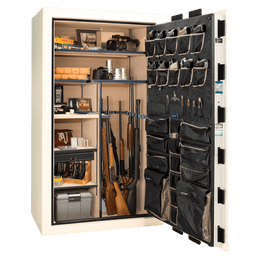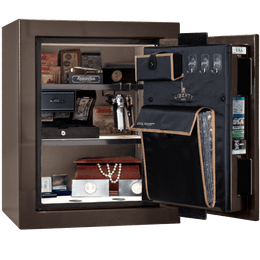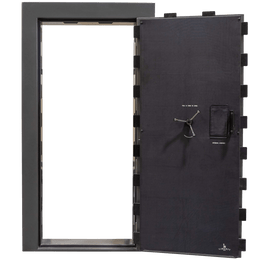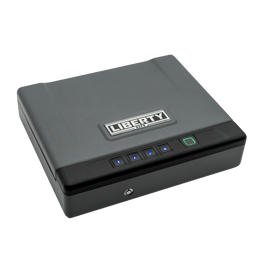Cartridge manufacturers introduce new offerings regularly, sometimes every year. The reasons vary, but the pursuit of market share and attracting customers who seek the latest, most innovative products are the most common factors. However, chasing better performance is always a goal, and occasionally a new cartridge offers something innovative enough to attract serious attention from the media and the firearms community. Federal’s new 7mm Backcountry cartridge, launched in early 2025, claims to reinvent ammunition. That’s a bold claim, but the technology and performance of the new round do have a legitimate chance of justifying that position. Other people feel this is just marketing hype, and that the new cartridge doesn’t really offer anything that isn’t possible with existing cartridges.
Let’s take a look at the new 7mm Backcountry cartridge and see if the juice is worth the squeeze.
What makes the 7mm Backcountry different?
At first blush, the 7mm Backcountry, also known as the 7mm BC, seems like just the next in a long line of 7mm wildcat cartridges based on the .30-06 case. Essentially, Federal started with the well-known and well-loved thirty-aught-six case and necked it down to accept a more ballistics-friendly 7mm bullet (technically 7.2mm or .284”, the same as the 7mm Remington Magnum and all other 7mm hunting rounds). The shoulder angle was steepened from 17.5 to 30 degrees, the same as the 7mm PRC, which is known to improve feeding reliability and boosts case capacity a small amount.
You may be thinking that taking a .30-06 case and necking it down to 7mm sounds a lot like the .280 Remington/7mm-06, which has been in production since 1957. And if that were all that Federal did, you’d be correct. However, though the general concept is the same, the execution–as well as the performance–are very different. And it all begins with a new cartridge case material Federal calls Peak Alloy.
Video: 7mm Backcountry Breakthrough
The 7mm Backcountry’s Peak Alloy cartridge case: why is it special?
Federal designed its new 7mm Backcountry from the ground up to utilize a proprietary steel alloy developed in response to military requests. Each case is then nickel-plated to reduce friction, improve feeding, and enhance corrosion resistance. The reason for the new case material is the extreme pressures produced by the 7mm Backcountry cartridge, which according to Federal’s data max out at an incredible 80,000 psi (pounds per square inch). By comparison, most common hunting cartridges produce much lower pressures. For reference, the mighty .300 Winchester Magnum’s maximum allowable pressure is 64,000 psi, the 7mm Remington Magnum tops out at 61,000 psi, and the .30-06 Springfield’s maximum pressure is just a tad over 60,000 psi.
The 7mm Backcountry’s extreme pressures are simply too high to use a traditional brass case material. For illustration, a .30-06 proof cartridge, specifically loaded to above-standard pressures to evaluate a firearm’s safety, develops pressures between 60,000 and around 73,000 psi, depending on the proof house and the application. This level of pressure is not considered safe for regular use, and in a firearm and case combination not specifically built to handle it, can potentially result in catastrophic failures, injury, and even death.
However, due to the new, super-strong Peak Alloy used to make the 7mm Backcountry’s case, pressure levels of 80,000 psi are safely attainable, according to Federal. Some feel the extreme pressures and steel cartridge case may result in potential issues, which we’ll discuss below. But why would anyone want a hunting cartridge that operates at such high pressures in the first place? It all has to do with increased speed from shorter barrels.
What are the advantages of the 7mm Backcountry?
So what’s the big deal about the 7mm Backcountry? Federal’s engineers were tasked with achieving magnum-level velocities out of shorter barrels, optimizing suppressed hunting, and maintaining feeding reliability, all without increasing recoil. That’s a tall order. Did they succeed? Let’s go over the main benefits of the new cartridge.
- Increased velocity from shorter barrels: Federal’s numbers record a 170-grain bullet leaving a 20” 7mm Backcountry barrel at 3,000 fps (feet per second). From a 24” barrel, Federal claims a velocity of 3,150 fps for its 168- and 170-grain loads, 3,350 fps from its Terminal Ascent 155-grain offering, 3,125 fps from its 175-grain Fusion Tipped load, and also offers a Berger Elite Hunter 195-grain clocked at 3,000 fps. That’s impressive by any standard, but in a quote-unquote non-magnum case and standard .30-06 length action, it could be argued that 7mm Backcountry really has reinvented ammunition, at least to some extent.
- Shorter barrels allow suppressors without excess weight: If you can achieve higher speeds with shorter barrels and non-magnum actions, theoretically, the rifle can weigh significantly less. Additionally, the barrel can be a lot shorter, allowing for the use of a suppressor without upsetting the balance of the rifle to the point that it becomes ungainly or too heavy. Suppressors will definitely come in handy (where legal) for hunters shooting the ultra-high-pressure 7mm Backcountry through light, short rifles.
- Standard, non-magnum diameter case: The 7mm Backcountry is based on the standard and well-loved .30-06 Springfield case, and has the same .472” case head diameter. This means you can potentially fit more rounds into a hunting rifle’s magazine compared to some of the larger-diameter magnum cartridges such as the 7mm Remington Magnum, .300 Win Mag, or the 7mm PRC (all of which have .532” rim and/or case head diameter, respectively). This might not be a deal-killer for some people, but an extra round can indeed come in handy in certain situations.
- Non-belted case: Along with a more slender case head diameter, the 7mm Backcountry is also a non-belted case. Some magnum cartridges use a belted design to control cartridge headspace. The .375 H&H Magnum, .300 Winchester Magnum, and 7mm Remington Magnum are some of the more well-known belted magnum cartridges. Modern cartridge designs feature more heavily shouldered and less bottleneck-shaped cases, and thus don’t require a belt to prevent over-insertion of a cartridge into the chamber or to set proper cartridge headspace. Non-belted cases are generally considered to feed more reliably from magazines as well.
Video: 7mm Backcountry: Optimized For Suppressors
What are the disadvantages of 7mm Backcountry?
Price, availability, and factory support: As a brand-new cartridge, the prices of both rifles and ammunition in 7mm Backcountry will initially remain fairly high compared to the old standards. The cheapest we’ve seen 7mm Backcountry ammunition at the usual online ammo sellers so far is around $47 for a box of 20, or around $2.35 per round. The offerings loaded with premium Barnes or Berger bullets list for $80.99 per box MSRP, and have been sold at the same retailers for around $64 per box, or around $3.20 per round. As a comparison, if you check the current inventory at the same retailer for 7mm Remington Magnum ammo, it’s available for as low as $23 per box of 20 rounds, or $1.15 per round. However, comparing similar-quality premium loadings between the two cartridges reveals that the premium Nosler bonded and Swift 7mm Rem Mag offerings can exceed $85-$90 per box of 20 rounds, or up to $4.50 per shot. So Federal’s pricing structure isn’t too bad, all things considered. And that price will likely come down a little if more ammunition makers buy into the technology and start loading 7mm Backcountry ammunition.
It’s noteworthy, however, that the retailer we checked for the above information offers a current inventory of 99 different loadings for 7mm Remington Magnum ammunition, with just 5 total loadings for 7mm Backcountry (and 3 of those are currently either out of stock or coming soon). This is to be expected with any new cartridge offering, however, and if 7mm Backcountry is as big a hit as Federal expects it to be, you may soon be able to find it at any rural gun shop or hardware store, next to the .30-06 and .308 Winchester ammo. But we’re a little skeptical on that. Federal has a recent history of releasing a new cartridge with a lot of hoopla, but quickly dropping its support of the cartridge if it doesn’t perform as well as expected.
While the current 7mm Backcountry rifle selection may be comparatively limited, there are already at least 9 manufacturers offering (or soon releasing) one or more rifle models in the chambering, including:
- Weatherby
- Christensen Arms
- Pure Precision
- Seekins Precision
- Proof Research
- Horizon Firearms
- Fierce Firearms
- Savage
- Geissele
- Gunwerks
For a brand-new cartridge, this is fairly impressive. Pricing for these premium hunting rifles is inline with these makers’ offerings in other calibers, but certainly the available models and makers is limited compared to rifles chambered in cartridges that have been around for decades or even over a century.
High pressure and noise: We wouldn’t bet money that we could tell the difference in sound between an 80,000 psi cartridge and a 60,000+ psi magnum cartridge, but regardless, it’s going to be LOUD. You’d never want to shoot a 7mm Backcountry without proper ear protection, even once. One shot from these rifles without using ear pro can cause permanent hearing damage. There’s no reason today to forego proper ear protection when hunting. This is another reason that suppressing a 7mm BC is a great idea.
Requires a long rifle action: Federal makes a big deal of their non-magnum cartridge fitting in standard rifle actions, but what they mean by that is a non-magnum-length action. Traditionally, a .30-06 length action is actually considered a long action, whereas a .308 Winchester length action is considered a short action. (Today, .30-06 may technically be considered a medium action compared to the super-long magnums that have become popular in long-range shooting, but most people would still call the standard .30-06 action a long action.)
This means that the rifle’s action and bolt are longer and heavier than they would need to be if the cartridge had been based on a short, .308 Winchester (or 6.5 Creedmoor) length action, similar to SIG’s new 80,000 psi .277 SIG Fury round. If this new high-pressure hunting cartridge trend catches on, we expect to see more short magnum-style 7mms that take advantage of the shorter receiver. This would maximize any length and weight savings even further. As it stands, other long-action cartridges like the .28 Nosler offer similar performance to the 7mm Backcountry, without the extremely high pressures produced by the new Federal cartridge.
Proprietary steel case, not easily reloadable: Federal has stated in their marketing literature that the new steel alloy cases are reloadable, but we haven’t seen any first-hand evidence that this is accurate. Typically, steel cartridge cases don’t do well when reloaded, as the properties of the material are very different between brass and steel. The fact that there’s currently only one source of 7mm BC cases (Federal) is potentially an issue for handloaders and reloaders, and it remains to be seen if the longevity and resizing properties of the Peak Alloy steel cases are up to modern standards. Some hunters may not care about reloading, and for them, this will not be an issue. However, handloaders looking for the best performance possible may need to purchase special dies or other tools specific to this steel cartridge case.
Steel cases perform differently from brass: Another potential issue is that brass cartridge cases have been the standard for the vast majority of hunting rifles for 150 years, especially bolt-action rifles. Brass cartridge cases, or casings, expand, contract, and stretch in very specific, predictable ways, and grip the walls of the chamber to help reduce bolt thrust and battering to the action and lugs. Steel, on the other hand, doesn’t stretch as much, contracts after expansion at a different rate, and has different lubricity and flow properties compared to brass. The nickel plating on Federal’s cases can possibly help with the lubricity issue, but the fact is that these new steel alloy cases are going to expand and grip the chamber walls at a different rate compared to brass.
This wouldn’t be a real issue if we had 100+ years of hunting rifle technology developed specifically to handle these steel cases, but we don’t. 99.9% of bolt-action hunting rifles have been developed and designed to utilize the unique properties of brass-cased cartridges.
We’re not implying that Federal hasn’t done sufficient testing of their new cartridge in suitable rifles. However it is somewhat of a question mark as to what levels of bolt thrust, stretching of the action or lugs, battering of the recoil surfaces in the receiver, or potentially galling might occur from extended use of an 80,000 psi steel-cased cartridge in rifles that have not specifically been built to handle it. These are essentially proof-level pressures (or higher) and there simply isn’t enough testing information out there yet. In fact, the Sporting Arms and Ammunition Manufacturers’ Institute (SAAMI) includes the following bold, highlighted notice on its newly approved, official 7mm Backcountry data/drawing sheet of the : WARNING: Maximum Average Pressure levels greater than 65,000 psi may present increased risk of unsafe cartridge case or firearm rupture and thus require cartridge case and/or firearm designs that depart from traditional practices (materials, construction, and other design criteria).
There are also additional unknowns regarding what 80,000 psi out of a .30-06 sized case will produce as far as throat erosion and barrel life. These questions will be more easily answered as more people adopt the platform and start getting more rounds out of their 7mm BC rifles.
More carbon fouling: This goes along with the brass vs. steel case issue above, but another potential downside of steel cases not expanding quickly or fully enough compared to brass is that the rifle can experience increased carbon fouling in the chamber. This is potentially more problematic in gas-operated semi-automatic or fully automatic rifles, which might experience higher round counts between cleaning, but it also may become an issue in bolt-action hunting or target rifles if they are shot a lot and/or cleaned infrequently. Increased fouling in the chamber can create extraction issues, accelerate wear on the rifle, and potentially cause accuracy or headspace problems if left unchecked.
However, we’ve found that most people who pay thousands of dollars for their high-end hunting rifles are pretty good about keeping them cleaned and maintained, so it may not be a serious issue in most probable circumstances.
Is 7mm Backcountry really any faster? As hinted at above, 28 Nosler handloads can send 180-grain bullets out of a 22-inch barrel at well over 3,000 fps, and similarly require the same long rifle action necessitated by the 7mm Backcountry. However, the Nosler case uses a larger, .534” case head diameter. All else being equal, yes, an 80,000 psi 7mm cartridge will produce higher velocities through the same length barrel than a 60,000 psi 7mm cartridge. Whether those velocities are enough of an increase to make a practical difference is another question.
Is 7mm BC actually a lower-recoil cartridge? Federal can say whatever they want, but physics is physics, and all things being equal, a 170-grain bullet driven at 3,000+ fps will produce more felt recoil than a 170-grain bullet driven at 2,700 fps. However, in the back-to-back testing we’ve seen between fairly comparable 7mm magnums and the 7mm BC, shooters couldn’t identify which cartridge was which. So while the 7mm BC may not be a lower-recoil cartridge, it appears that, all else being equal, the felt recoil it produces isn’t any more punishing or unpleasant than any other magnum-level 7mm hunting rifle.
Is the 7mm BC actually a non-magnum cartridge? In our view, no… not even close. An 80,000 psi cartridge is absolutely producing magnum-level pressures, and is even above the pressures of the special proof rounds used to ensure the safety of a new firearm design in some cases. It’s shorter and slimmer than some other magnum rounds, but the pressure is what we’re really concerned about, not semantics.
So, is the 7mm Backcountry worth the hype? Should you buy one?
For most people, we’d guess that they wouldn’t get much benefit out of buying a new 7mm Backcountry rifle, especially if they already have one or more similar rifles chambered in similar cartridges in their gun safes. Not many shooters will truthfully be able to tell the difference between a 7mm rifle shooting 170-grain bullets at 2,900 feet per second and one shooting 170-grain bullets at 3,100 fps. And the game you’re shooting at won’t be able to tell the difference either, especially if you’re engaging the animal at reasonable distances from which you are assured to make a clean, ethical kill. Plus there are the potential issues caused by ultra-high-pressure, 80,000 psi rounds being fired in rifles that technically haven’t been built for it. This is unlikely to be a widespread problem, particularly in high-quality hunting rifles that may be fired a few times a year, but it is indeed something to consider.
However, if you’re an experienced marksman or markswoman and are looking for the absolute pinnacle of performance out of the lightest, shortest-barreled hunting rifle, and especially if you plan to use a suppressor, then the 7mm BC actually does offer some performance that isn’t possible from any other current cartridge of its diameter. You do get increased velocity, potentially one more round in the magazine, and a more compact overall package compared to other high-speed 7mm hunting cartridges. If reloading for your hunting rifle is a main priority for you, you might have your work cut out for you with the 7mm Backcountry. However, new technology or reloading dies might make it just as easy as loading for brass-cased cartridges… eventually. Whether this new rifle and cartridge system is worth investing in is a personal choice that only you can make. Hopefully, this article provides some useful information to help you make that decision.
Secure your 7mm BC rifle (and everything else) in a Liberty Safe
Whether you have just one hunting rifle or a whole bunch, be sure to help keep all your firearms and valuables more secure from theft, fire, and unauthorized access with a quality US-made gun safe from Liberty. You can see the whole line of models, configurations, and colors in our interactive online catalog, or see them in person at a Liberty Safe showroom near you.
*Made in the U.S.A. from U.S. and Global Parts.







